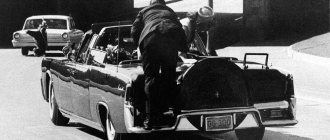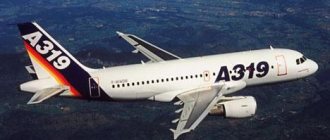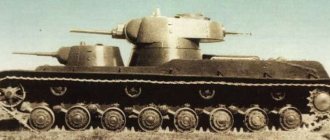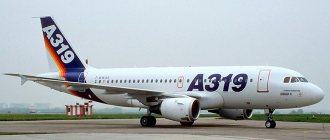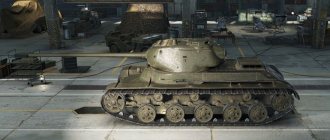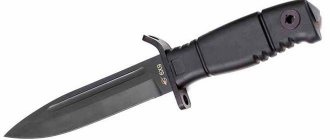Commercial exploitation
From 1993 to 2013, six Il-96-300 were operated by air. Three more such aircraft entered the fleet of Domodedovo Airlines, two - KrasAir (under an agreement with IFC, they were operated until 2008). For a short time, one or two aircraft belonging to the OKB flew on Atlant-Soyuz flights and others. Among non-commercial structures, the “short” version is used by the presidential aviation squadron (including former KrasAir aircraft).
Ilyushin Finance Co. did a lot of work to promote the Il-96-300 on the international market. The Voronezh leasing company sold three newly built aircraft. They were acquired by Cuba using loans from Russian banks provided under the sovereign guarantees of the island Republic. So far, IL-96-300 deliveries to Cuba in 2005-2006. remain the only case of export of products of domestic four-engine passenger aircraft of the new generation.
Last year, the fleet of the national carrier Cubana de Aviacion was replenished with a fourth aircraft. Unlike the previous ones, these “silts” were previously operated by Aeroflot. This experience also represents a significant event in the history of Russian aircraft leasing. We are talking about cars from the secondary market that have undergone a change of ownership and major repairs before being sold abroad.
The commercial operation of the Il-96-300 as part of Cubana de Aviacion can be considered successful. Well-constructed maintenance and repair practices played a big role here. The specialized Russian structure IFK-Tekhnik helps local aviators solve this and other issues.
Providing after-sales service (PSS) is a long-standing, complex topic for domestic aircraft manufacturers. Operating organizations often criticized AK Il for insufficient attention to their problems. Therefore, the successful experience of operating the Il-96-300 in Cuba can hardly be overestimated. By agreement with the Cuban authorities and Cubana de Aviacion, Ilyushin Finance Co. proposed and implemented in practice logistics schemes aimed at ensuring uninterrupted operation of Russian aircraft supplied under a leasing scheme with export credit.
IFC shared its experience with the Design Bureau, conducting relevant courses for specialists of the design bureau. Here is what Nikolai Dmitrievich Talikov told us on this topic: “Finally, we understood what was what. With the help of Ilyushin Finance Co., using the example of Il-96 aircraft, we came to understand what is required to ensure uninterrupted operation of aircraft. How to build approaches to providing after-sales service and how to create a support system for operating organizations.”
“Having received new aircraft, operating organizations should not experience problems with them. It is necessary that they extract maximum profits by intensively operating aircraft while ensuring flight safety. In fact, we began to think in their categories too,” continues Nikolai Dmitrievich. The general designer promises to “turn our face to exploitation” instead of “puffing out our cheeks and saying that we know all your problems - deal with them yourself.”
After the withdrawal of the Il-96-300 from Aeroflot’s fleet, Cubana de Aviacion remained the world’s only commercial operator of aircraft of this modification. As a rule, the interior of Cuban cars accommodates 262 passengers: the cabin has 18 business class seats with a seat pitch of 54 inches and 244 economy class seats with a seat pitch of 32 inches. There is an option with a separate cabin for high-ranking officials - they travel on “silts” when public service matters require it.
Named aircraft
Some Il-96 aircraft bear the names of outstanding Soviet pilots and figures in aviation and astronautics.
- Il-96-300 RA-96005: “V. Chkalov"
- Il-96-300 RA-96007: “A. Mayorov"
- IL-96-300 RA-96008: “I am. Moiseev"
- Il-96-300 RA-96010: “N. Karpeev"
- Il-96-300 RA-96011: “V. Kokkinaki"
- Il-96-300 RA-96014: "Mikhail Vodopyanov"
- Il-96-300 RA-96015: “M. Gromov"
- Il-96-300 RA-96017: "Mikhail Reshetnev"
- Il-96-400T RA-96101: “Vyacheslav Salikov”
- Il-96-400T RA-96102: “Valery Menitsky”
- Il-96-400T RA-96103: “Stanislav Bliznyuk”
Competition: technical and not only
After the collapse of the Soviet Union and the liberalization of the local market, a flood of “foreign cars” poured into our country. The process brought both positive and negative aspects. On the one hand, airlines now have a wide choice and the opportunity not only to operate foreign-made aircraft, but also to enjoy access to borrowed capital of foreign origin for fleet renewal programs. On the other hand, individual managers were tempted to use business contacts with companies to solve personal problems.
Among other things, this led to the emergence of various types of so-called. “objective comparisons” of foreign models with domestic ones, where there was clearly a desire to present “foreign cars” in a more favorable light than they deserved “in terms of technology.” In particular, at the turn of the 2000s, journalists were presented with a comparison of the Boeing 767-300ER with the Il-96-300. Unfortunately, those who carried out the analysis clearly sympathized with the American car, “forgetting” in their comparison to take into account the much more capacious cargo compartments of the “silt” when calculating commercial efficiency. Meanwhile, the significantly larger fuselage diameter gives the IL-96-300 the ability, in addition to passengers, to take on board 16-18 LD-3 type containers. They are located in cargo compartments below the floor of the passenger compartment (belly cargo).
“The Il-96-300 aircraft is competitive with the Boeing 767, and a special study confirmed this,” Genrikh Novozhilov told us. – It should be understood that “-300” is a “truncated” version, and the plane was designed to carry 350 passengers! We can accommodate 386 passengers on the Il-96M; the corresponding cabin layout was made by us and preserved at the Design Bureau.”
The first flight of the Il-96-300 dates back to 1988. The type certificate was received in 1992, commercial operation began in 1993. In the same year, the Il-96M/T took off with an extended fuselage, from 55.35 to 63.94 meters. These variants were equipped with American Pratt&Whitney PW-2037 engines and Collins avionics. They have been certified in Russia and “shadow” certification by the North American Aviation Administration (US FAA).
The Americans highly appreciated our aircraft and even used its main parameters when designing their own next-generation aircraft. The creation of the base model of the Boeing 777-200 and Il-96M proceeded in parallel. These machines have surprisingly similar geometry: the fuselage diameter is about six meters, the difference in length and wing span is one meter. Since all this was preceded by the appearance of the “short” Il-96-300, the OKB should be blamed for them. S.V. Ilyushin’s plagiarism is not possible (and even the Il-86, which was produced from 1980 to 1994, has a fuselage diameter of 6.08 meters). American designers first accepted the fuselage diameter as 6.08 meters, recalls Genrikh Vasilyevich. But then they added another 120 mm, and, as a result, the “three sevens” had a final figure of 6.2 meters.
In the nineties, both Aeroflot and Transaero not only promised to buy dozens of Il-96M/T (and, later, Il-96-400), but even signed corresponding agreements. True, the then management of the airlines did not strive to implement them. But they purchased the Boeing 777, sequentially, in several batches. Aeroflot “explained” the acquisition of the Boeing 777-200ER (the very first batch for the airline) by saying that they were “necessary in order to roll out routes for the Il-96M.”
A few years later, however, the “three sevens” were returned to the lessors (but the Il-96M was never taken) because it turned out to be too spacious for the airline’s passenger flows at that time. A new purchase of improved aircraft of this model took place under the current leadership. And how super-capacious Boeings “helped” Transaero accumulate debts and go bankrupt – much was written about this at the end of last year, when the airline ceased operating activities.
Description of the Il 96 aircraft
Although the IL-96 is similar in appearance to the progenitor of the IL-86, the differences are still noticeable. It has a low-lying supercritical wing with a span of 60.1 m2 and reduced sweep. At the ends of the planes there are winglets that reduce inductive reactance.
The T-shaped tail was abandoned on the wide-body aircraft, but to improve directional stability in the event of engine failure, the fin height was increased by one and a half meters. The wing is equipped with mechanization; there are slats in front along the entire tip, and double-slit flaps at the rear. These devices create the necessary lift at high angles of attack without disrupting the air flow.
Cabin Il 96
The airframe uses new composite materials, which reduce the weight of the structure and extend its service life. The chassis of the vehicle is designed according to a three-wheel design: the main struts have four-wheel brakes, the nose two-wheel strut does not have brakes.
The IL-96 is equipped with four PS-90A engines with a takeoff thrust of 16 thousand kg each. The power plants are located on underwing pylons, two on each side of the fuselage. A special feature of the engines is the “Diagnoz-90” electronic control system, which allows you to control the operating parameters of the power plant, fuel consumption and prevent the occurrence of surge.
Thanks to the flight navigation system and the electronic flight control system VSUP-85-4, the IL-96 crew consists of three people (without a navigator). In the cockpit there are displays that display information about flight parameters and navigation conditions; on the central panel there are two more displays indicating the operating parameters of the power plants. The aircraft is controlled by fly-by-wire, three-channel.
Unlike the Il-86, the new aircraft has fuel tanks with twice the capacity: four tanks in each console and one inside the fuselage. The air conditioning system is automatic, supplying each passenger with 25.7 kg/hour.
The wing and tail are equipped with an electric pulse anti-icing system that protects their leading edges. The engine air intakes are heated by hot air from the compressor chamber.
Salon Il 96
The comfortable passenger cabin accommodates 300 people, but for a two-class configuration the capacity is 235 passengers. The lower deck is divided into three compartments for luggage and cargo.
Flight characteristics of Il 96 400
The deep modernization of the Ilyushin was the Il-96-400, below are the characteristics for this modification:
- Wing span – 60.1 m.
- Wing area – 391.6 m2.
- The length of the aircraft is 63,961 m.
- Maximum take-off weight – 265 tons.
- The total payload weight is 58 tons.
- Flight range – 10 thousand km.
- Cruising speed – 870 km/h.
- Cruising echelon – 12 thousand m.
- Number of passengers – 436 people.
- Power plants – PS-90A1.
- Crew members – 3 people.
"All is not lost yet"
Over the past quarter century, Russia has lost a lot in the field of civil aviation. Often, industry positions were surrendered voluntarily. Russian airlines are accustomed to operating foreign aircraft. “We are fully aware of where we are, what we are capable of and how we will ultimately attract customers. However, if the state does not help aircraft manufacturers, then all our efforts are worthless,” says Nikolai Talikov.
Today, government support mechanisms are implemented in a strange way, to put it mildly. For example, flights are subsidized regardless of whether a foreign or local aircraft is used to operate them. “The state allocates large amounts of money, subsidizing flights to the Far East, but we cannot launch our own aircraft, with a fuel consumption of 20 grams per passenger kilometer, into series?!,” Genrikh Vasilyevich Novozhilov is indignant. — Nikolai Dmitrievich and I preach that all is not lost. We have a ready-made aircraft with high fuel efficiency and a service life of 70 thousand flight hours, tested by certifying authorities and in operation. Why not mass-produce it?!”
For the last few years, VASO has been producing “silts” at the rate of one car per year. The extreme side with registration RA-96022 and a cabin for 160 travelers became the twenty-eighth aircraft of the Il-96 family. It made its first flight in November 2015 and is currently preparing to be transferred to the Presidential Aviation Squad. The media cited the cost of the corresponding contract in 2013 as 3.75 billion rubles, which at the current exchange rate does not exceed 52 million US dollars.
Meanwhile, price lists for foreign wide-body airliners give values that are many times higher. In particular, the corresponding document from Toulouse aircraft manufacturers contains the following figures on a scale of “millions of US dollars”: A330-200 - 231.5, A330-800neo 252.3, A330-300 256.4, A330-900neo 287.7, A350-800 272.4, A350-900 308.1, A350-1000 355.7.
When a barrel of oil sold for a hundred dollars or more, the fuel efficiency of aircraft came to the fore. The share of kerosene in the ticket price exceeded 50-60%. Since then, the situation on the world market has changed. Calculations performed by specialists from the OKB im. S.V. Ilyushin, they say the following. Today, direct operating costs are similar for twin-engine and four-engine aircraft. The change in prices for aviation kerosene (in dollar terms) “made a correction”, and the gap between the A330 and Il-96-400M practically disappeared.
“After the fall in oil prices, the life of an aircraft will be determined by its price, not its fuel. The role of the selling price of an aircraft is increasing today,” says Novozhilov.
In many ways, the selling price of an aircraft is determined by the complexity of its manufacture. Therefore, modern technologies are coming to the fore, promising a reduction in manual labor. Among the progressive moments of recent times, Genrikh Vasilyevich notes the following. According to information from American colleagues, the Boeing 737MAX fuselage will be riveted automatically. There are examples of automatic wing assembly on a slipway - so far not in relation to passenger, but combat aircraft. “Paperless” technology, when all documentation is kept on computers, is of particular importance. Of course, these and other new products should find application in the domestic aircraft industry.
Great importance is attached to serial production to reduce the cost of the aircraft. “We posed the question: the construction is not one piece per year, but, as was the case with the Il-86, eight to ten annually. Then we can talk about something. A domestic aircraft may be somewhat inferior in terms of technical excellence, but superior in terms of delivery and service,” says Nikolai Talikov.
“You can’t cross Russia on foot; you have to fly from the European part to the Pacific coast. If Russian airlines can continue to purchase Western aircraft and operate them without hindrance, there will be one scenario. And if the state feels that there are aircraft of its own design, and it is possible to work with them... the situation will change,” he continues.
So far, the main operating experience of the Il-96 is associated with its “short” version. The extended version of the “silt” carried out flights under the flag of only one aircraft. At the beginning of the century, it ordered four Il-96-400T freighters with PS-90A1 engines from IFC. Three of them were built and delivered to the customer. After the airline ceased operations, these cars were returned to the lessor. Two cargo aircraft were converted at the factory into a special-purpose version for security forces.
The decision in favor of serial production of the Il-96-400M will make it possible to preserve a large aircraft plant. At first, the airliner will be produced in Voronezh in parallel with the military transport Il-112V. The latter will be assembled “under the wing” of the Il-96 and “the weather will not play a role” in terms of plant load and redevelopment of the final assembly shop. By the standards of such a large enterprise as VASO, the estimated demand for turboprop military transport aircraft is relatively small. After the completion of the IL-112V series, what should the plant do next? The answer is Il-96-400M!
Documentation for the Il-96-400M airframe has been prepared. The decision to launch a new modification at VASO is under consideration by industry management. “We expect that if there is a team, we will be able to build the first aircraft in mid-2022,” says Talikov.
Among other domestic vehicles, the IL-96 still looks good in terms of weight return. At the same time, any machine needs to be improved as it stays in the series and the availability of new technologies. According to the General Designer, it is necessary to take measures to reduce the weight of the structure in order to increase weight efficiency and transport capabilities. “We want to reduce the empty weight of the aircraft by several tons. This is possible through the use of modern wires and electrics, other equipment, coatings, and the like,” Nikolai Talikov told us.
The on-board equipment installed on the aircraft fully complies with all international standards, including ensuring landing under ICAO Category 3 and the requirements of ICAO Chapter 4 on local noise. “We will continue to improve our aircraft. In particular, if new requirements from international organizations appear, we will make appropriate changes,” our interlocutor continues.
Distinctive characteristics
When developing the Il-96-400M model, Russian engineers made many changes to the previously created air transport model, making the new aircraft strikingly different from many aircraft created by other airlines:
Many military units became interested in the model in question, classifying it as a tanker aircraft. This model is equipped with additional fuel tanks, which are located in the fuselage compartment. If necessary, an additional fuel system is simply connected to the main one, and its capacity allows you to additionally transport about 62 tons of fuel. This model is considered as a “two in one”, because if the services of a tanker are not required, the aircraft can quite easily be converted into a regular air transport
Moreover, the modifications will not affect the range that the aircraft of the new model range can cover. It is equally important to note the second feature of the IL-96 - the safety of air travel. During the tests, the pilot was able to land the plane without damage according to the usual landing pattern, on which all 4 power units were specially turned off.
Not every air transport created by the hands of the world's most famous aircraft manufacturers can boast of such features.
Technical characteristics of the modernized model Il-96-400 and 96-400M:
The aircraft can accommodate 435 passengers. To take off, the plane requires a 2,600-meter runway.

